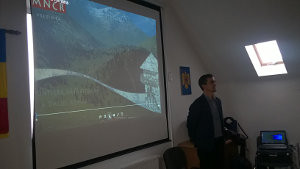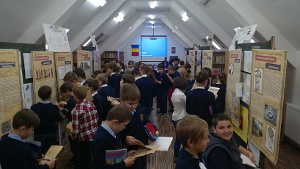The history lesson with non-formal methods. A successful project!

Project director Dr. habil. Alexandru Popa, together with his colleagues Andrea Chiricescu and Dan Buzea visited the Ghimbav Secondary School (Brașov county), in the context of a partnership between the School and the National Museum of Eastern Carpathians, to hold an untraditional history lesson for the 5th grade pupils. The activity took place on the 11th November 2015 in the school’s documentation and information center. The presentation called “The Eastern Border of Roman Dacia” included information about the history of Roman Province Dacia, the main aspects of the ongoing research project, the methods applied and its expected results. The main focus was set on describing the use of modern technologies in the field research of the roman limes from south-east Transylvania. The big challenge for Alexandru Popa was to find the right words to express all these in a language easy to understand by the 5th grade pupils.

Together with the multimedia presentation of Alexandru Popa, Andrea Chiricescu and Dan Buzea caught the pupils’ and teachers’ attention with a set of 13 plates (80x120 cm each) on the same theme that will remain exhibited in the school for a short period. At the end of the lecture each pupil received creative game about the clothing of a roman soldier and a questionnaire that is meant to facilitate the understanding and learning of new information and concepts about the Roman Limes in Transylvania. All the answers are to be found on the 13 plates.
The pupils gladly received this non-formal way to teach a history lesson and immediately engaged in the activities and in finding out all the correct answers. Since time was short we couldn’t finish filling in all the answers. This activity will be conducted by history teacher Ramona Popovici, who was our collaborator in this project. She will also check if the answers are correct and will grade the pupils accordingly.